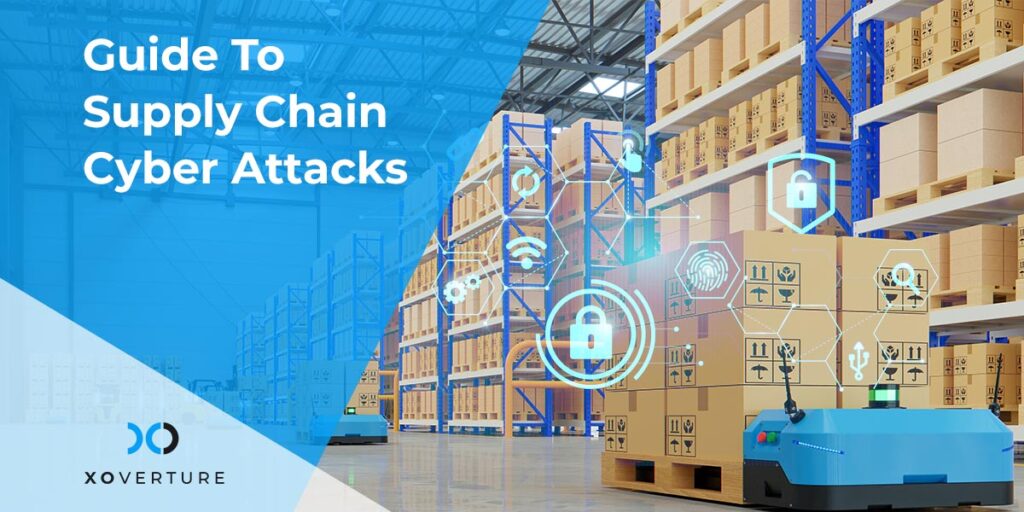Supply chain attacks are usually overlooked cyberattacks, but given enough time, they have the potential of wreaking havoc. Such attacks are difficult to detect and prevent if your vendors are not adhering to strict cybersecurity service standards and utilizing the best tools. This is mainly because supply chain attacks target vendors and suppliers rather than a specific business directly.
In this blog, we will look closer at what a supply chain attack is and how to prevent your business from becoming its next victim.
What Are Supply Chain Attacks?
In order to seriously damage an organization’s operations, finances, and reputation, a supply chain attack attempts to infiltrate and disrupt a system within the supply chain. Typically, this is done by attacking a third-party vendor or supplier connected to the target that only best cybersecurity companies can detect and prevent.
A supply chain attack, also known as a value chain, third-party attack, or backdoor breach, occurs when threat actors compromise a third-party vendor or supplier of a company that has access to that organization’s data in order to eventually breach the network of the targeted business. This typically occurs when malicious code is inserted into a vendor’s trustworthy program.
Supply chain attacks enable wider targeting, and the number of victims can increase based on how many clients the attacked vendor has.
Here is how you can vet your supply chain partners to protect your business from a supply chain attack:
How To Prevent A Supply Chain Attack?
Whether or not legislative restrictions are implemented, the key to safeguarding your supply chain is to make sure each of your third-party vendors complies with the highest cybersecurity standards as mandated by top cybersecurity and infrastructure security agency.
The main cause of supply chain attack susceptibility is complacency. This is mainly because companies don’t realize how vulnerable even the most reliable vendors are to data breaches.
Select A Vendor With Care
Examine a vendor’s cybersecurity framework before shortlisting it. Verify that the security policies and procedures used by vendors are well-organized, tested, and certified. The norms and conditions for access and use of data must be specified in contracts with vendors in detail.
Implement A Zero-Trust Methodology
Businesses should insist that their IT department use a zero-trust approach whenever possible. This step will restrict unnecessary network activities ensuring that no user or application should be trusted by default.
Risk-Level Assessment
A risk-level assessment is used to determine the security precautions your business and vendors take to ensure your technology is not vulnerable. Together you and your vendors greatly increase the likelihood of supply chain attacks if you don’t do regular risk-level assessments.
Make sure your business is protected with a strong, resilient defense system that includes regular security testing and vulnerability assessments. Verify that a relevant cybersecurity measure is in place to protect each area you evaluate.
New software or code is generally incorporated into your secure system by third parties. Therefore, ensure that any code vendors introduce into your network is thoroughly tested.
Limit Access To Sensitive Data
It’s important to know exactly who has access to sensitive information within an organization so that access can be limited to designated users for approved purposes. This information should be made available to third parties as suggested by top cybersecurity companies.
Monitor And Review Cybersecurity
Cyberattacks are continually evolving to take advantage of organizations’ vulnerabilities. Organizations and their vendors must regularly review and update their cybersecurity policies in order to reduce the likelihood of a supply chain breach.
Multi-Step Authentication
According to cyber security companies, supply chain attacks could be avoided with multi-factor authentication. Threat actors will encounter an additional barrier to cross between themselves and a vendor’s internal systems if vendors implement this security protocol.
Segment Your Network
If not absolutely required, third parties shouldn’t have access to sensitive areas of your network. Leverage network segmentation to separate the network into different zones according to your business’s needs. Hackers attempting to compromise your company’s operations will have a harder time doing so on a network that is properly segmented and access-controlled.
Final Word
Supply chain cyberattacks are going nowhere. By following the best practices mentioned in this above, you can protect your supply chain. You’ll be better equipped to respond to these attacks in a smart, strategic, and secure manner—from your software to the hardware and everything in between.




